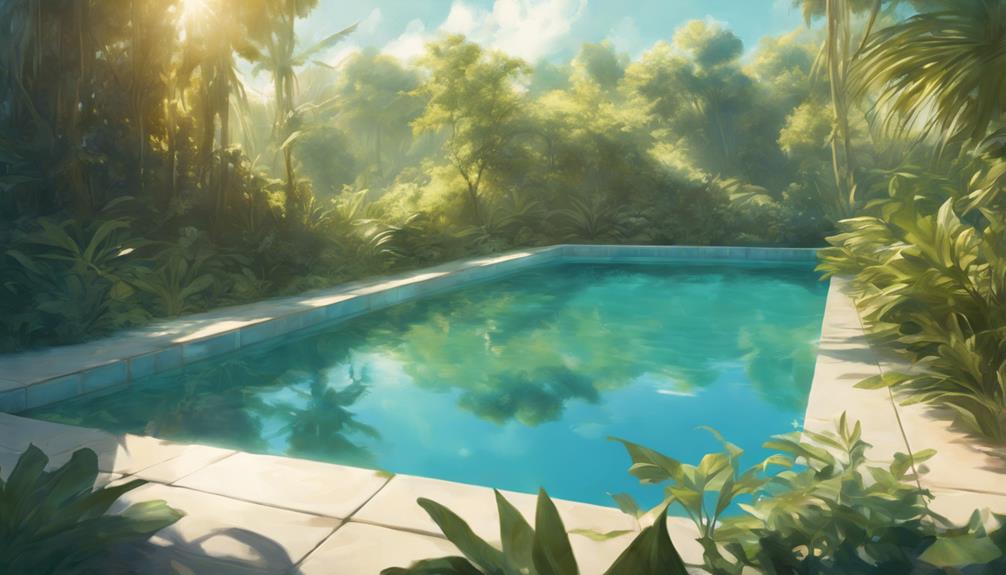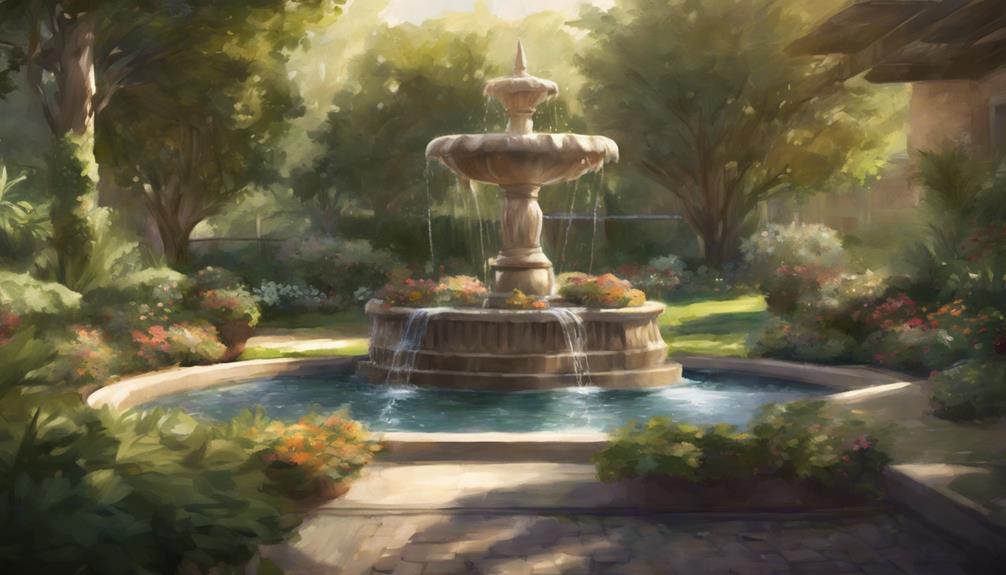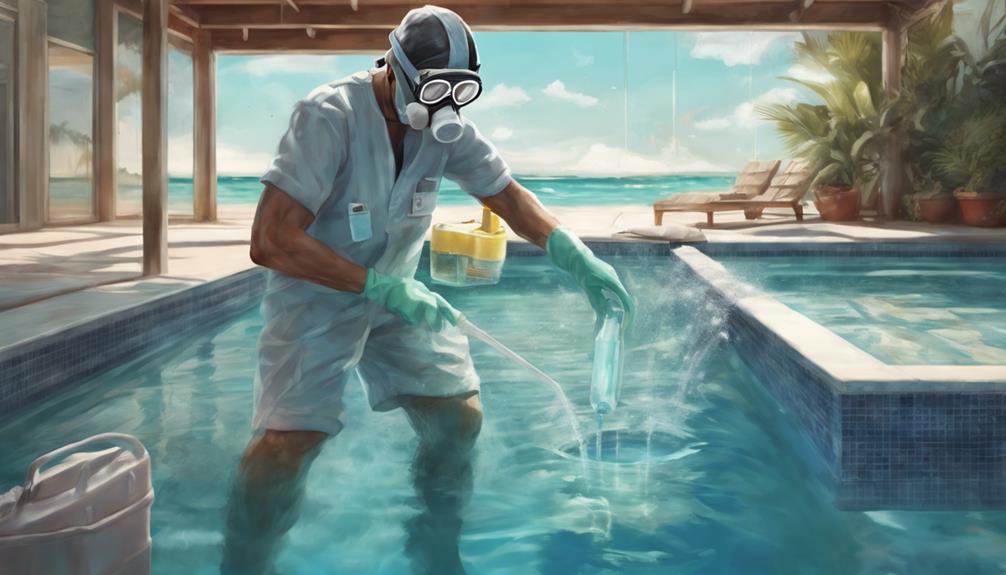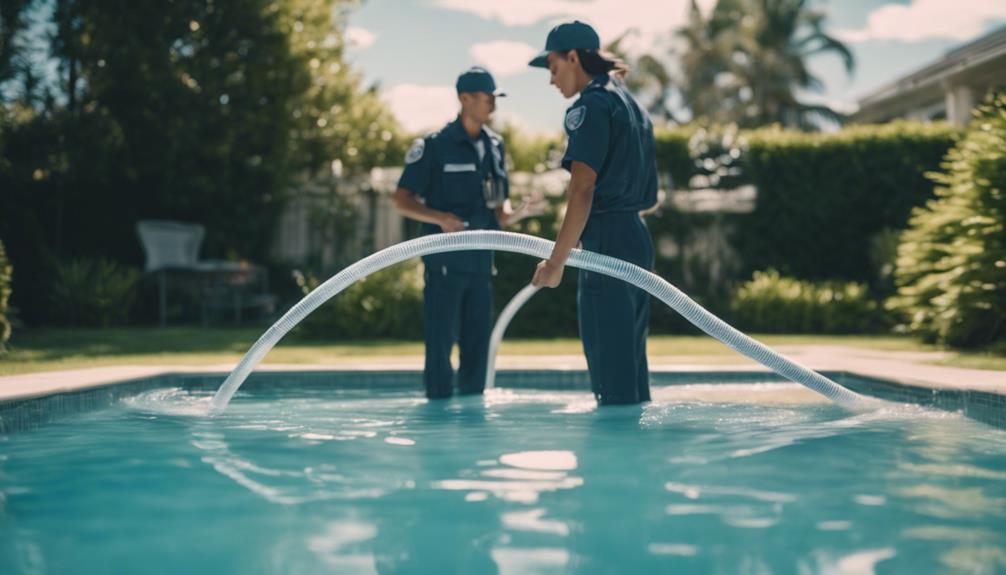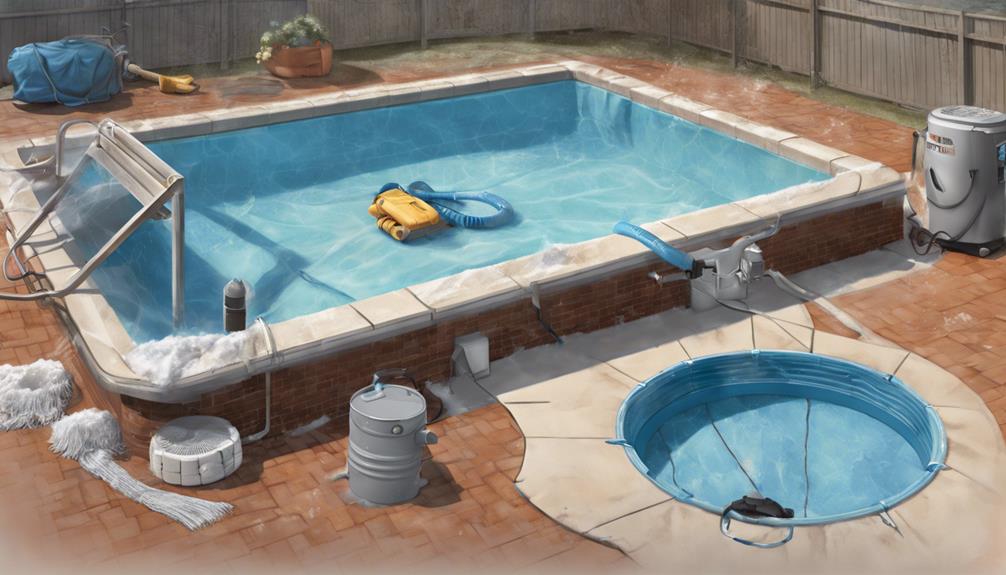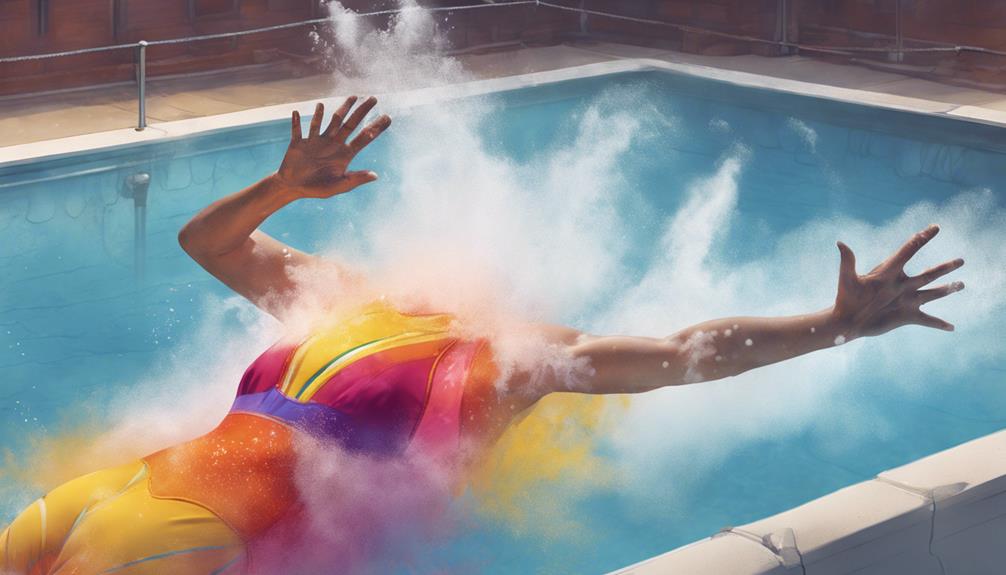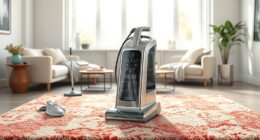For clean and clear pool water, it is important to periodically skim and clean the pool surface, vacuum the bottom on a weekly basis, and brush the walls and floor. It is essential to maintain proper pH and chlorine levels for a healthy balance by frequently testing the water. Use an appropriate filter type, backwash it regularly, and run it for at least 8 hours each day. After heavy pool usage, apply shock treatments and select the correct algaecide to effectively prevent algae growth. By following these expert tips, you can ensure a clean and welcoming pool environment.
Key Takeaways
- Regularly skim, vacuum, and brush pool to remove debris and prevent algae buildup.
- Maintain proper chemical balance with frequent testing and correct pH and chlorine levels.
- Use effective filtration methods by backwashing regularly and running the filter adequately.
- Implement pool shock treatments after heavy use or weather changes for water clarity.
- Utilize algaecide compatible with the filtration system to prevent algae growth and maintain water clarity.
Pool Skimming and Cleaning
Regular pool skimming and cleaning are vital maintenance tasks to keep your pool in top condition. Skimming the pool surface daily to remove debris is essential. Vacuuming the pool bottom at least once a week and brushing the pool walls and floor weekly help prevent algae buildup and maintain water clarity.
By consistently performing these tasks, you not only guarantee a clean and inviting pool but also prolong the life of your pool equipment. Additionally, regular cleaning reduces the strain on your pool's filtration system, leading to more efficient operation.
Maintaining Chemical Balance
To maintain peak pool water quality and prevent issues such as algae growth and bacterial contamination, it is essential to uphold the chemical equilibrium of your pool water consistently.
Testing the water at least twice a week for pH levels and chlorine content is vital. Keeping the pH level between 7.4 and 7.6 helps sustain water clarity and prevents irritation to swimmers' eyes and skin.
Proper chlorine levels are necessary for killing harmful bacteria and algae. Regularly checking and adjusting these chemical levels will guarantee a safe and enjoyable swimming environment.
Effective Filtration Methods

For achieving the best pool water quality, implementing effective filtration methods is crucial. To achieve peak filtration, backwash the pool filter regularly following the manufacturer's guidelines.
Running the pool filter for a minimum of 8 hours daily during peak swimming season helps in maintaining water clarity. It is essential to choose the right filter type – sand, cartridge, or diatomaceous earth – to ensure efficient filtration based on your pool's specific needs.
Proper filtration aids in removing debris, bacteria, and other contaminants from the water, promoting a clean and healthy swimming environment. By prioritizing effective filtration practices, pool owners can enjoy sparkling, crystal-clear water throughout the swimming season.
Pool Shock Treatments
Implementing proper pool shock treatments is vital for maintaining water clarity and eliminating contaminants effectively. Shocking the pool involves adding a high dose of chlorine to kill bacteria, algae, and other organic matter that regular chlorine levels may not be able to handle.
It is recommended to perform shock treatments after heavy pool use, heat waves, or rainstorms to keep the water clean and safe for swimming. Following the manufacturer's instructions carefully is important to guarantee the shock treatment is successful.
Algaecide Use and Benefits
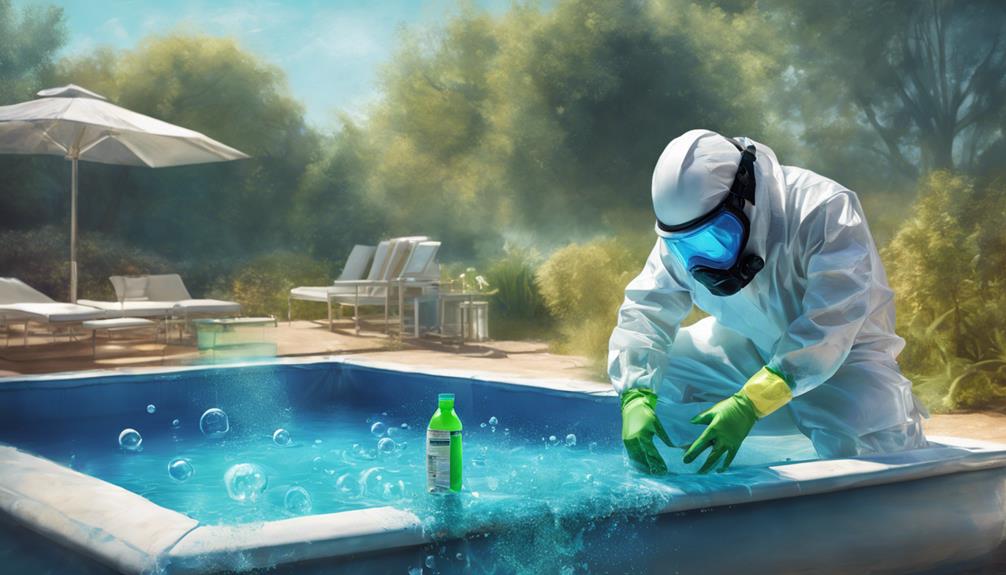
Proper utilization of algaecide in pool maintenance enhances water clarity and prevents algae buildup effectively. Algaecides are chemical formulations designed to kill and inhibit the growth of algae in pools. They work by disrupting the algae's cellular structure, making it easier for the filtration system to remove them.
Using algaecide regularly can help maintain a clean and sanitary pool environment, reducing the risk of algae blooms and the need for excessive scrubbing. It is important to choose an algaecide that is compatible with your pool's filtration system and to follow the manufacturer's instructions for the correct dosage and application.
Frequently Asked Questions
How Often Should I Replace My Pool Filter?
Pool filters should be replaced based on the manufacturer's guidelines, typically every 2-5 years depending on the type of filter used and the level of maintenance. Regular backwashing and cleaning can extend the filter's lifespan.
Can I Use Baking Soda to Adjust Ph Levels?
To adjust pH levels, baking soda can be used in pools as a safer alternative to harsh chemicals. However, it's essential to monitor levels closely and consult a pool professional for accurate guidance on maintaining proper pH balance.
What Is the Best Time to Shock the Pool?
The best time to shock the pool is after heavy pool use, heat waves, or rainstorms to eliminate contaminants effectively. Follow manufacturer's instructions carefully for successful shock treatments, ensuring proper sanitation and preventing algae growth.
Is It Safe to Swim After Using Algaecide?
It is safe to swim after using algaecide, as long as you follow the manufacturer's instructions for proper dosage and waiting time. Algaecides break down quickly, making the water safe for swimming shortly after treatment.
How Do I Troubleshoot Cloudy Pool Water?
To troubleshoot cloudy pool water, assess filtration system, chemical balance, and recent weather conditions. Check for clogged filters, improper pH or chlorine levels, and recent heavy pool use. Seek professional assistance if issues persist for best water clarity.
How Can Glass Tiles Help Achieve Sparkling Pool Water?
Make a splash with trending pool glass tiles to achieve sparkling pool water. The reflective properties of glass tiles can enhance the light and color of the water, creating a vibrant and inviting atmosphere. Additionally, the smooth and non-porous surface of glass tiles makes them easy to clean and maintain.
Conclusion
In the intricate dance of pool maintenance, each step is a delicate brushstroke on the canvas of water clarity. From the meticulous skimming to the precise chemical balancing, every action contributes to the masterpiece of a sparkling pool oasis.
By incorporating expert advice and practical tips into your maintenance routine, you can transform your pool into a shimmering gem that beckons all to wade into its invigorating depths.
Master the art of pool care and watch your aquatic masterpiece shine.

